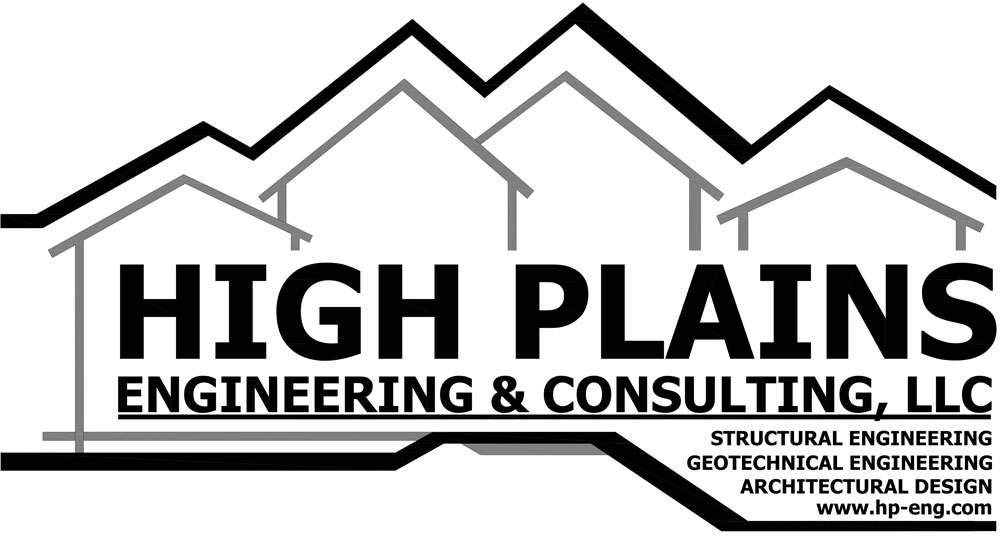
Beyond the Code: Understanding Firewalls, Barriers, and Partitions in Building Design
In the world of architecture and construction, safety considerations go far beyond the aesthetic and functional elements of a building. Among the most critical components are those designed to manage and mitigate fire risks—namely firewalls, fire barriers, and fire partitions. While these elements often go unnoticed by the building’s occupants, they serve as essential defenses in protecting lives and limiting property damage during a fire. Understanding their distinctions, roles, and the regulations that govern them is vital for architects, contractors, and anyone involved in commercial fire protection. In this blog, we will explore the complexities and nuances of these building components, bringing clarity to commonly misunderstood terms and concepts.
The Basics: Firewalls, Fire Barriers, and Fire Partitions
At the heart of fire-safe construction lies the effective use of physical barriers to compartmentalize fire and smoke. However, terms like “firewall,” “fire barrier,” and “fire partition” are often used interchangeably—incorrectly so. These components each serve specific functions and are defined distinctly in building codes and design practices.
A firewall is the most robust of the three, designed to separate buildings or divide a structure into separate fire areas. Its primary function is to prevent the spread of fire from one section of a building to another, even if one section collapses. Firewalls must extend from the foundation to the roof and often protrude beyond the roofline to provide maximum protection. Because of this, firewalls are frequently constructed from concrete or other non-combustible materials and are required to have high fire-resistance ratings—often up to four hours depending on the occupancy type.
In contrast, a fire barrier is a vertical or horizontal assembly that is not necessarily structurally independent like a firewall. It is designed to limit the spread of fire within a building and is commonly used to separate different occupancies or create protected egress paths. Fire barriers typically have a fire-resistance rating of one to three hours and must be continuous from one fire-resistant element to another, such as from a floor to a roof deck.
The fire partition is generally the least robust in terms of fire resistance but plays a critical role in subdividing spaces such as corridors, dwelling units, and tenant spaces. These partitions usually have a one-hour fire-resistance rating and are required in many types of construction for residential and commercial buildings alike. Although they don’t need to extend through concealed spaces like fire barriers, fire partitions must still connect securely to floor and ceiling assemblies and maintain their integrity under fire conditions.
Clarifying the Confusion: The Difference Between Firewall and Fire Barrier
One of the most common questions among professionals new to fire-resistant construction is the difference between firewall and fire barrier. While both are used to inhibit fire spread, the differences lie in their construction, purpose, and code requirements.
Firewalls are designed to be completely self-supporting. This means if the structure on one side of the firewall collapses, the firewall must remain intact, continuing to protect the adjoining side. This structural independence makes firewalls essential for separating buildings or building sections that must remain operational even if a fire occurs in one area. In many cases, firewalls allow a single building to be considered as separate buildings under the building code, which can simplify design and improve safety.
On the other hand, fire barriers are not structurally independent. They rely on the surrounding building structure for support and are primarily intended to compartmentalize space within a single building. For example, fire barriers can be used to create vertical exits, separate different occupancy groups, or enclose hazardous areas like mechanical rooms. Although they can be designed to high fire-resistance ratings, their failure is more likely if the surrounding structure fails.
Moreover, firewalls require a more stringent continuity than fire barriers. They must run continuously through the entire height and width of the building and often beyond. Fire barriers, while continuous from one fire-resistive assembly to another, may not need to breach the roof or foundation level. This makes fire barriers more flexible in interior applications where full separation is not feasible or necessary.
Standards and Ratings: Fire Resistance Ratings for Partitions and Barriers
The fire resistance ratings for partitions and barriers are essential for ensuring the correct application and performance of these assemblies during a fire event. These ratings, typically measured in hours, represent the duration for which a wall or floor assembly can withstand exposure to fire conditions as defined in standardized fire tests.
A fire partition, as commonly used in residential and commercial projects, is generally rated for one hour. It must prevent the passage of flames and hot gases long enough to allow for evacuation and, in some cases, suppression. Fire partitions are frequently found in apartment complexes, hotel rooms, and office suites. While their construction might be less robust than fire barriers, they still require careful detailing, especially at penetrations, joints, and intersections with other assemblies.
Fire barriers have more flexible fire-resistance rating options, ranging from one to three hours, depending on the specific function and the code requirements. For example, fire barriers enclosing exit stairways or corridors typically require a two-hour rating in high-rise buildings. The design must account for firestopping at all openings, including ducts, conduits, and doorways. Additionally, ratings must be consistent with tested assembly specifications as outlined by entities such as UL (Underwriters Laboratories) or ASTM (American Society for Testing and Materials).
Firewalls, being the most robust, often require a minimum of three to four hours of fire-resistance rating. Their performance is evaluated not only for fire endurance but also for structural stability under fire exposure. Because of their demanding construction and inspection requirements, firewalls are used sparingly but effectively in facilities like warehouses, industrial buildings, and campuses with large, complex structures.
Each rating must be supported by tested designs and proper documentation to ensure compliance. Building inspectors and fire marshals will often verify this documentation during inspections to confirm that fire-resistive elements meet the intended protection levels.
Integrated Systems: Commercial Fire Protection in Design
When discussing commercial fire protection, it’s important to understand how firewalls, barriers, and partitions integrate with active and passive fire protection systems to create a comprehensive safety strategy. While walls and assemblies form the passive backbone, they are most effective when paired with systems such as sprinklers, alarms, and smoke control.
Passive elements like fire partitions work seamlessly with sprinkler systems to slow fire spread and allow the system to suppress flames within a confined area. This dual protection strategy is especially vital in buildings with high occupant loads, such as schools, hospitals, and shopping centers. Fire barriers used in vertical shafts must also accommodate mechanical systems like HVAC, necessitating specialized fire dampers to prevent fire or smoke migration through ductwork.
Doors within fire-resistive assemblies must also meet specific fire-protection criteria. For example, a door in a one-hour fire barrier must often be rated for 45 minutes and equipped with self-closing and latching mechanisms. Glazing systems in fire partitions or barriers must be fire-rated and often limited in size or location to prevent premature failure during a fire.
Beyond the obvious, commercial fire protection also includes considerations for inspection, maintenance, and repair. All components, from wall assemblies to sealants and firestopping materials, must be regularly checked to ensure their ongoing integrity. Neglected penetrations, unsealed gaps, or improper modifications can quickly compromise a well-designed fire protection plan.
Moreover, collaboration among architects, engineers, contractors, and code officials is crucial during the design phase. Misinterpretations or assumptions about fire-resistive elements can lead to costly retrofits, project delays, or compliance issues. Early and frequent coordination ensures that each wall, door, and joint serves its purpose in the building’s fire safety narrative.
Designing for Resilience: Moving Beyond Minimum Code
While building codes provide the legal baseline for safety, going beyond the code is becoming an increasingly important philosophy in modern construction. Firewalls, fire barriers, and fire partitions are not just checkboxes in a compliance list—they are vital tools in building for resilience, continuity, and long-term safety.
For instance, facilities that house critical infrastructure, data centers, or healthcare operations often demand performance that exceeds minimum code requirements. These buildings may incorporate redundant firewalls to compartmentalize operations or use advanced fire-resistant materials that improve response time and containment. Even in commercial office spaces, using higher-rated fire barriers can provide additional time for evacuation, especially when considering people with disabilities or larger occupant loads.
Architects and developers are also leveraging these design elements to achieve certifications like LEED or WELL, where occupant health and safety are prioritized. The integration of sustainable, fire-resistant materials supports both life safety and environmental goals, while innovative designs are minimizing the visual and functional impact of these safety features.
Conclusion
Understanding the full spectrum of fire-resistive construction—from the modest fire partition to the formidable firewall—is essential for building safe, code-compliant, and resilient structures. As urban environments grow denser and building technology evolves, the interplay between structure, regulation, and innovation will continue to shape how we protect spaces from fire hazards. Whether you are a designer, contractor, or facility manager, staying informed about the principles and practices of commercial fire protection can help you create buildings that stand not just the test of time, but the test of fire.
Need Engineers and Designers in Hudson, CO?
Since 2006, High Plains Engineering & Consulting, LLC has been a civil and structural engineering company in Fort Lupton and the surrounding areas. We provide sensible solutions to geotechnical, structural, environmental, and civil engineering challenges. Our office provides practical expertise backed by diverse design resources to get the job done cost-effectively and efficiently with sustainability in mind. We offer various services for commercial, residential, and agricultural properties like soil testing, percolation testing, and foundation and septic design for new construction. Once that is taken care of we also offer services for floor framing, garage plans, house plans, site plans, and inspection services. Call us today for an appointment!
Categorised in: Fire Safety

 HPEC is an active member of CAGE
HPEC is an active member of CAGE